What Hi-Fi? Verdict
The dCS Rossini Apex DAC is an exceptional performer that sets sky-high standards for performance and pricing
Pros
- +
Outstanding detail, composure and sonic authority
- +
Expressive dynamics
- +
Taut and powerful bass
- +
Excellent build and finish
Cons
- -
Streaming module doesn’t impress as much as the DAC section
- -
A bewildering array of filters and sonic tuning options
Why you can trust What Hi-Fi?
The dCS story is unusual. The brand was originally established in 1987 to work as an electronics consultancy for the likes of Ferranti, Marconi Avionics and British Aerospace. Its work was used in the RAF Harrier and Typhoon radar systems.
In 1989, this foundation of digital processing knowledge led to the company’s first audio product, the 900 ADC – an analogue-to-digital converter built for studio use. What is the link to the cutting-edge Rossini Apex DAC we have on test here? Well, that 900 ADC was the first commercial product to use dCS’s 24-bit Ring DAC conversion technology, something that remains at the very core of the Rossini and the company’s other digital components to this day.
Design & Features
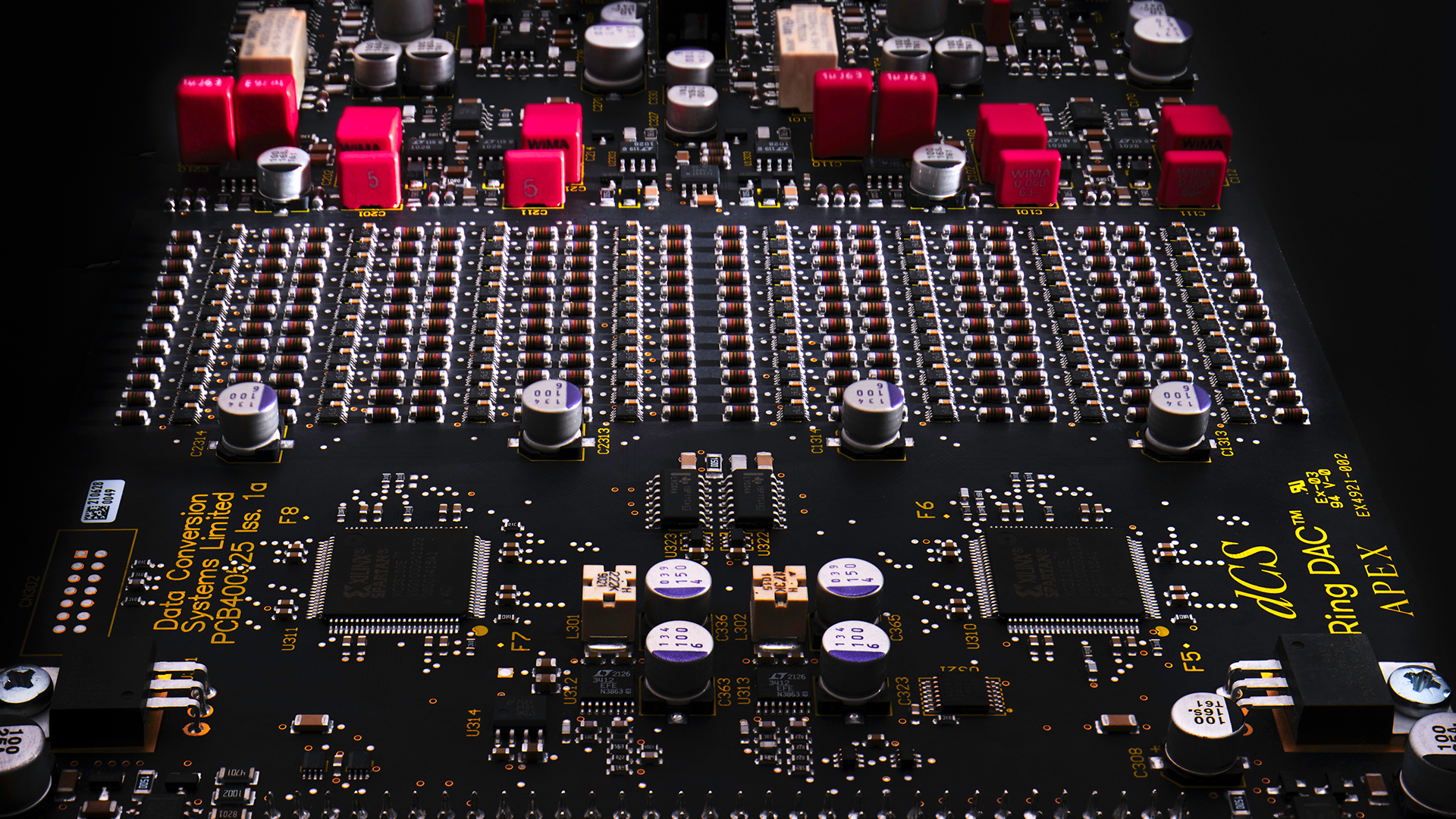
The Ring DAC circuit is a fully discrete electronic design that runs custom software and claims to deliver class-leading performance. In comparison, most rival brands buy in off-the-shelf DAC chips from major OEM suppliers such as Burr Brown, AKM or ESS Technology, and then build a circuit around them. Crucially, this gives those hi-fi manufacturers very little control over how the chip is configured or the quality of the software that runs it. Does that compromise outright performance? dCS certainly thinks so.
The Ring DAC design may be long-running, but that doesn’t mean it has stood still. Over the years we’ve seen steady improvements, particularly on the software side of things. It is important to note that wherever possible, the company has made these software upgrades available to existing owners for free. That’s something to be commended in our book, particularly when the world of digital technology in general seems to bake-in obsolescence.
The Apex in the product name signifies a major overhaul of the Ring DAC circuit. There are changes to the reference power supply that feeds the DAC circuitry, improvements to components and their layout, as well as revised software. The analogue board has been significantly upgraded too.
As usual, dCS makes these upgrades available to existing customers, but the cost of the upgrade boards and fitting means that there is a charge. The amount varies on where you are, so contact your local dealer or distributor for more detail on prices.
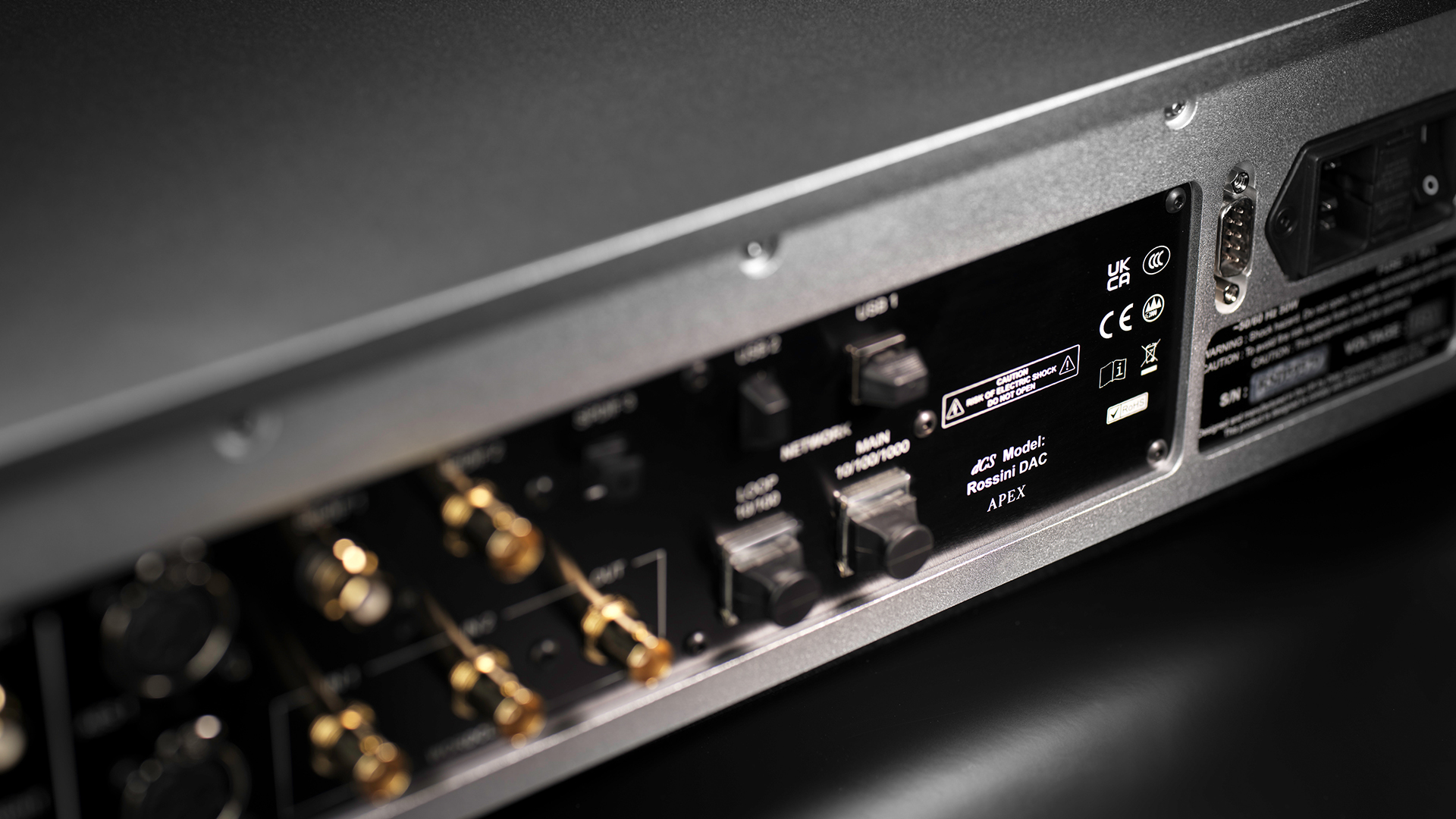
The company describes the Rossini Apex as an upsampling network DAC. We’re not quite sure how that makes it different from what we call a music streamer, but perhaps it is an indication of where the design priority lies. Here, it seems the job of conversion is central, leaving the streaming abilities secondary. That’s certainly an impression that gets reinforced once we start listening.
The UPnP streaming module can play music across a home network and access music streaming services such as Tidal, Qobuz, Deezer and Spotify Connect. Internet radio is on the menu, of course, as is Apple AirPlay and Roon Ready compatibility. It’s all controlled through the company’s dedicated and relatively slick Mosaic software app (available for iOS and Android).
The Rossini Apex DAC is something of a tweaker’s delight. Work through the menus, preferably using the Mosaic app, and there is a huge amount to play with, not least the number of filter options. We appreciate some people like to fine-tune such things but the choice here is bewildering, and while there are certainly differences, they are hardly of the make-or-break variety.
There are four standard PCM filters which go from Filter 1 (sharpest roll-off and worst transient response) to Filter 4 (that goes the opposite way). We prefer Filter 3 or 4 for most of our listening, in case you wondered. A total of four filter options would have been a decent place for dCS to stop, but it didn’t.
If you are listening to a CD-spec 44.1kHz file, Filters 5 and 6 offer different flavours in terms of phase behaviour and pre-ringing. But, if you are listening to PCM files of 176.4kHz or above, these two filters change characteristics accordingly with regard to roll-off, ringing and transient behaviour. There is a dedicated filter for MQA files and a further five options for DSD data streams.
We can’t help thinking that things have gone too far here. Ideally, we would like dCS’s engineers to cherry-pick what they consider to be the best-performing options. We’d be happy with five or six choices in total.
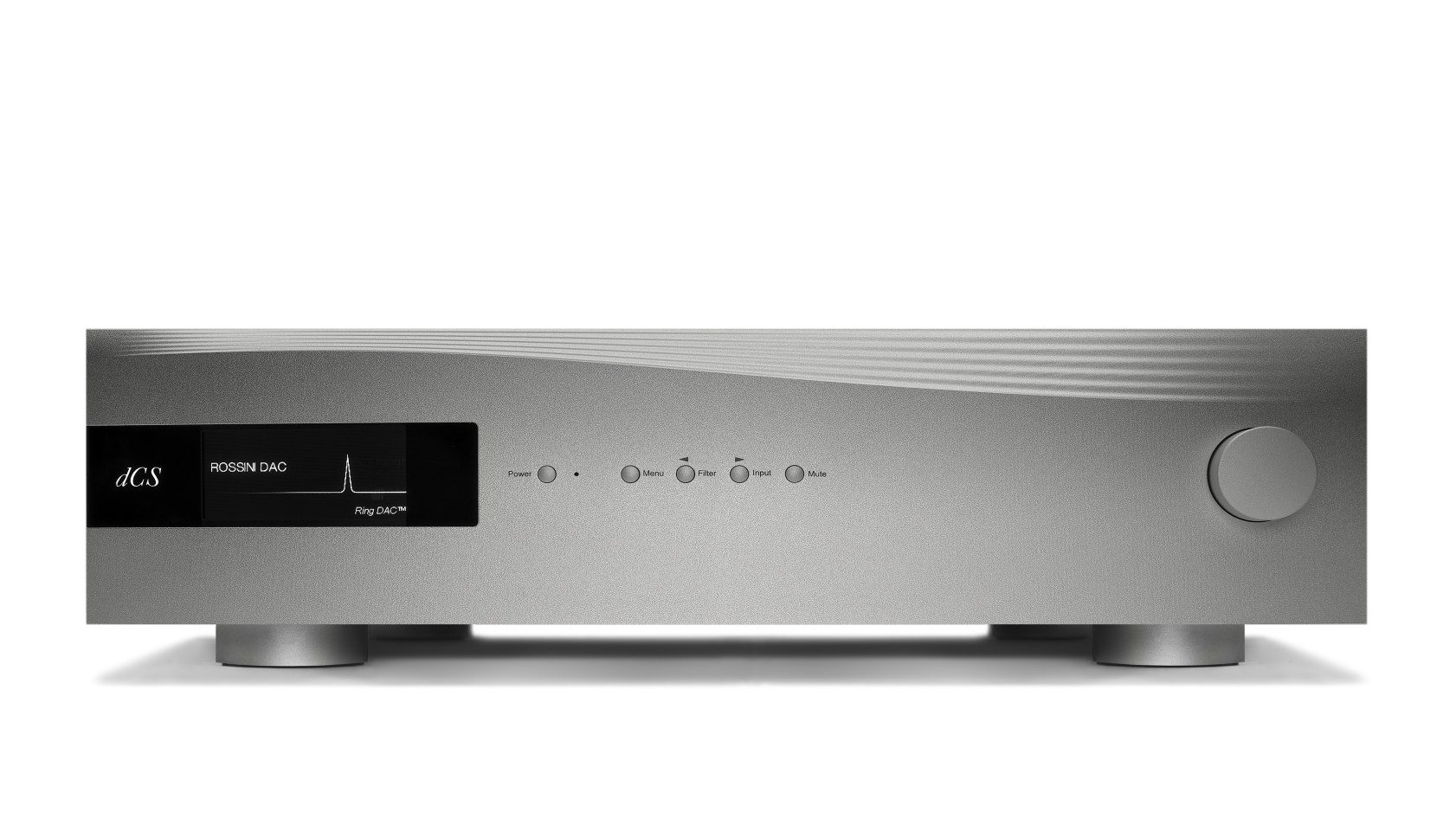
Digital inputs USB Type A x 1, USB Type B x 1, coax BNC x 1, coax RCA x 1 , optical x 1, AES/EBU x 2
Analogue inputs None
Steaming module Yes, UPnP
Analogue outputs Balanced XLR, stereo RCA
Volume control Yes
Dimensions (hwd) 125 x 444 x 435mm
Weight 15.6kg
It doesn’t end there. You can also swap the Ring DAC’s Mapper software (the code that governs how the data is presented to the circuit’s core). There are three options here: the new (default) software, the original ‘Classic’ code and a third choice that runs at a higher processing speed than the others. Given that dCS’s own listening tests conclude that the new default software actually sounds the best, we’re not sure why the company seems so keen to complicate things further.
Much more useful is the ability to change the Rossini Apex’s maximum analogue output level. There are four steps – from 0.2v to 6 volts – to help compatibility with a partnering preamp or power amplifier. You can also connect this DAC to an outboard master clock. Every digital product has a clock built-in; it’s how all the parts of the digital circuit synchronise. The more accurate the clock is, the better the performance will be.
The master clock built into the Rossini is really good (obviously, given the price), but in our experience, if you add a top-quality external unit such as the ones that dCS makes, the performance takes a leap forward. Such clocks cost thousands though, so it’s not a cheap upgrade and certainly not essential to enjoy this product.
Build quality & Connectivity
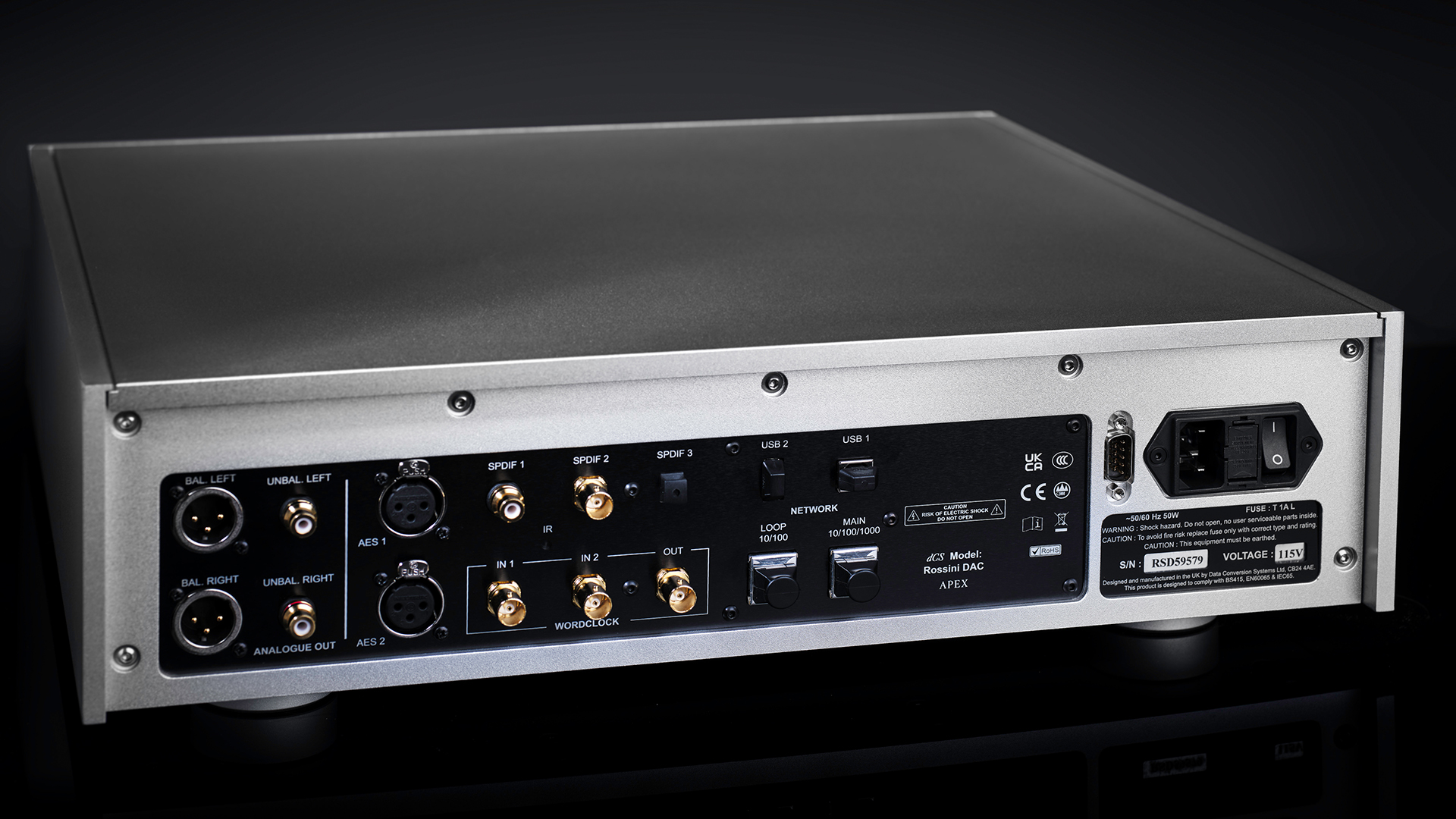
The Rossini’s connectivity is good. You have USB in both Type A and B forms along with coax, BNC coax, optical and a pair of AES/EBUs. There are no analogue inputs of course, but there are outputs in both single-ended RCA and Balanced XLR flavours.
Any product that sells for as much as the Rossini has to be superbly made, and it is. This is a chunky unit that at 15.6kg weighs more than most integrated amplifiers we know. Fit and finish of the aluminium casework are beyond criticism and all the controls – but particularly that lovely, nicely damped volume dial – work with enviable precision. The front panel display is clear, though on the small side. Everything can be operated through the dCS Mosaic app so that isn’t as much of an issue as it could have been.
Any product of this type positively demands a top-class system. We use Naim’s ND555/555 PS DR and dCS’s own (now discontinued) Network Bridge as digital sources, along with our MacBook Pro running Audirvana music software. The rest of our system is Burmester’s 911 Mk III power amp feeding ATC SCM50 speakers. We also have Audiovector’s R6 Arreté floorstanders on hand.
If you are going to rely on the dCS’s built-in streaming module as your main source, we don’t think you’ll hear the Rossini Apex DAC at its considerable best. This module is pretty slick and fully featured, delivering a nice, even and detailed sound. Yet, even without comparison to our reference Naim streamer feeding the Rossini’s BNC digital input, we’re aware that things lack a bit of dynamic expression and rhythmic enthusiasm. The streaming section can still be considered good, but the rest of the Rossini Apex design is fabulous.
Sound
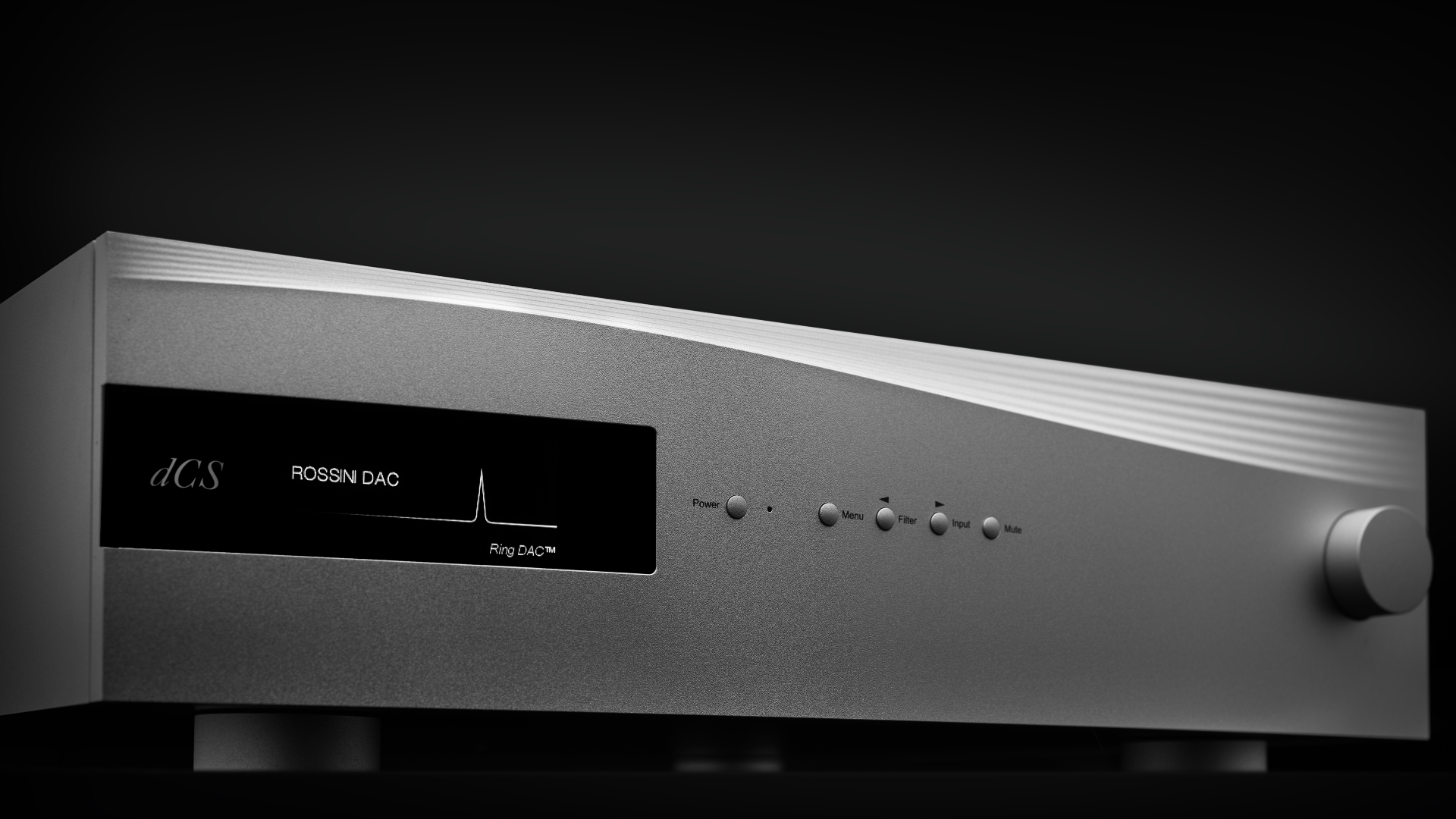
We listen to our reference system with the usual Burmester 088 preamp in and out of the circuit, and it doesn’t take long to decide that we prefer the dCS feeding our power amp directly. There is just more in the way of transparency and insight. It’s rare that a DAC with a volume control can do this to a high-end analogue preamp, but it just goes to show just how good the Rossini’s new analogue boards are.
Once we optimise the system, we set about finding out more about this DAC’s sound quality. Listening to Stravinsky’s The Rite of Spring is a treat. The Rossini Apex makes short work of the music’s complexity and savage dynamic swings. Everything sounds wonderfully in control yet this number cruncher doesn’t dilute the energy or drive in the music one jot. We sit in front of the ATC speakers thrilled, transfixed by the authenticity of the performance. Instruments are wonderfully textured and rendered with confidence.
We’re impressed by the authority and scale of the Rossini’s presentation. It sounds solid and full-bodied in a way that digital products very rarely do. We also admire the stability, focus and layered nature of the dCS’s stereo imaging. It’s an expansive presentation; one which leaves plenty of space around the instruments regardless of the complexity of the music.
Tonally things are less of a surprise. In our experience dCS always tunes its products to be as neutral and even-handed as possible, and that’s still the case here. The difference is that some of the company’s earlier products – for all their wealth of abilities – erred on the side of clinical sterility, where they encouraged listeners to analyse the recording more than enjoy it. That’s certainly not the case here, with the Rossini Apex sweeping us away with the musical experience.
We switch to Massive Attack’s Mezzanine and the dCS responds just as we hope. There is lots of detail and an impressive degree of organisation, but accompanied by a surefooted rhythmic ability that allows tracks like Atlas Air to motor along full throttle. Low frequencies are painted with power and grip with a good dose of agility thrown in. Move up the frequency range and you’ll find a wonderfully open and expressive midrange that communicates the passion and nuances in vocals superbly.
Over our test sessions, we try the various digital inputs and different file types from 24-bit/88.2kHz PCM files of Michael Jackson’s Off The Wall and Stevie Wonder’s Innervisions in DSD to Beethoven’s 9th Symphony in 24-bit/192kHz, and the dCS takes it all in its stride. There are no hiccups when changing file formats and no unexpected differences in the way different formats sound. The Rossini Apex DAC delivers transparency of the highest order.
Verdict
There is no denying that the dCS Rossini Apex DAC is hugely expensive, and in these financially turbulent times it is easy to dismiss such products simply because they cost so much. Yet, judge this DAC by performance and it’s hard to imagine how it can be bettered. If you’re lucky enough to contemplate buying at this level, we envy you.
SCORES
- Sound 5
- Build 5
- Features 5
MORE:
Read our review of the Chord DAVE
Also consider the Nagra DAC/MPS
7 reasons why a DAC could be your music purchase of the year
What Hi-Fi?, founded in 1976, is the world's leading independent guide to buying and owning hi-fi and home entertainment products. Our comprehensive tests help you buy the very best for your money, with our advice sections giving you step-by-step information on how to get even more from your music and movies. Everything is tested by our dedicated team of in-house reviewers in our custom-built test rooms in London, Reading and Bath. Our coveted five-star rating and Awards are recognised all over the world as the ultimate seal of approval, so you can buy with absolute confidence.


